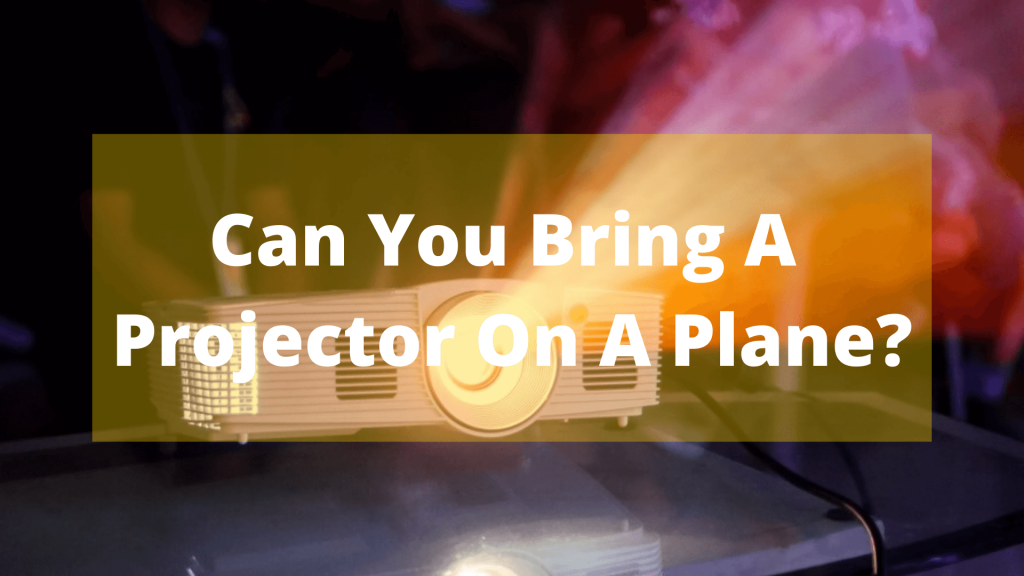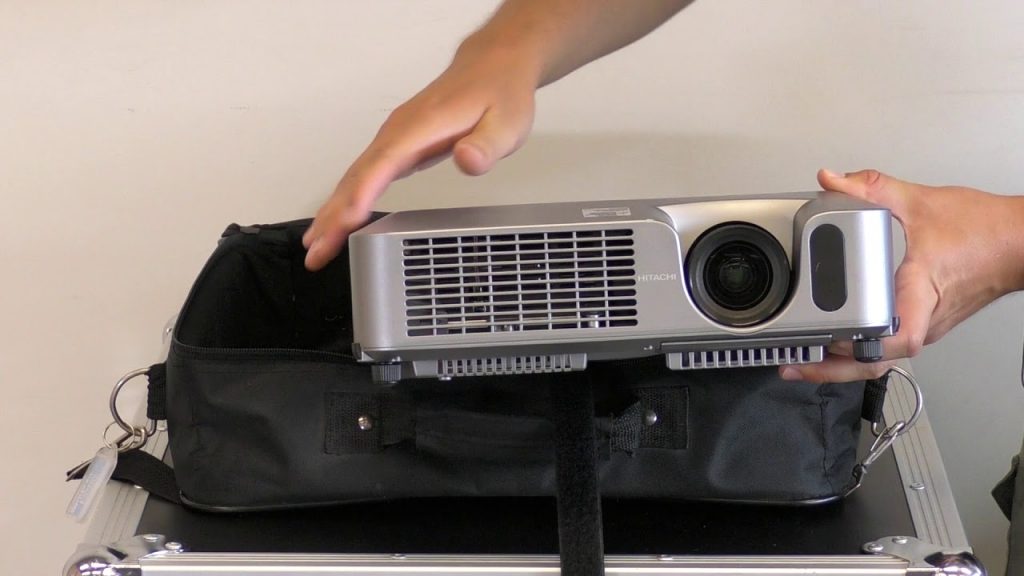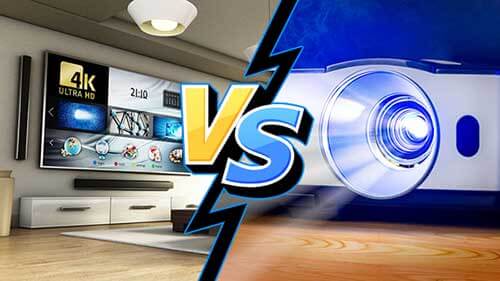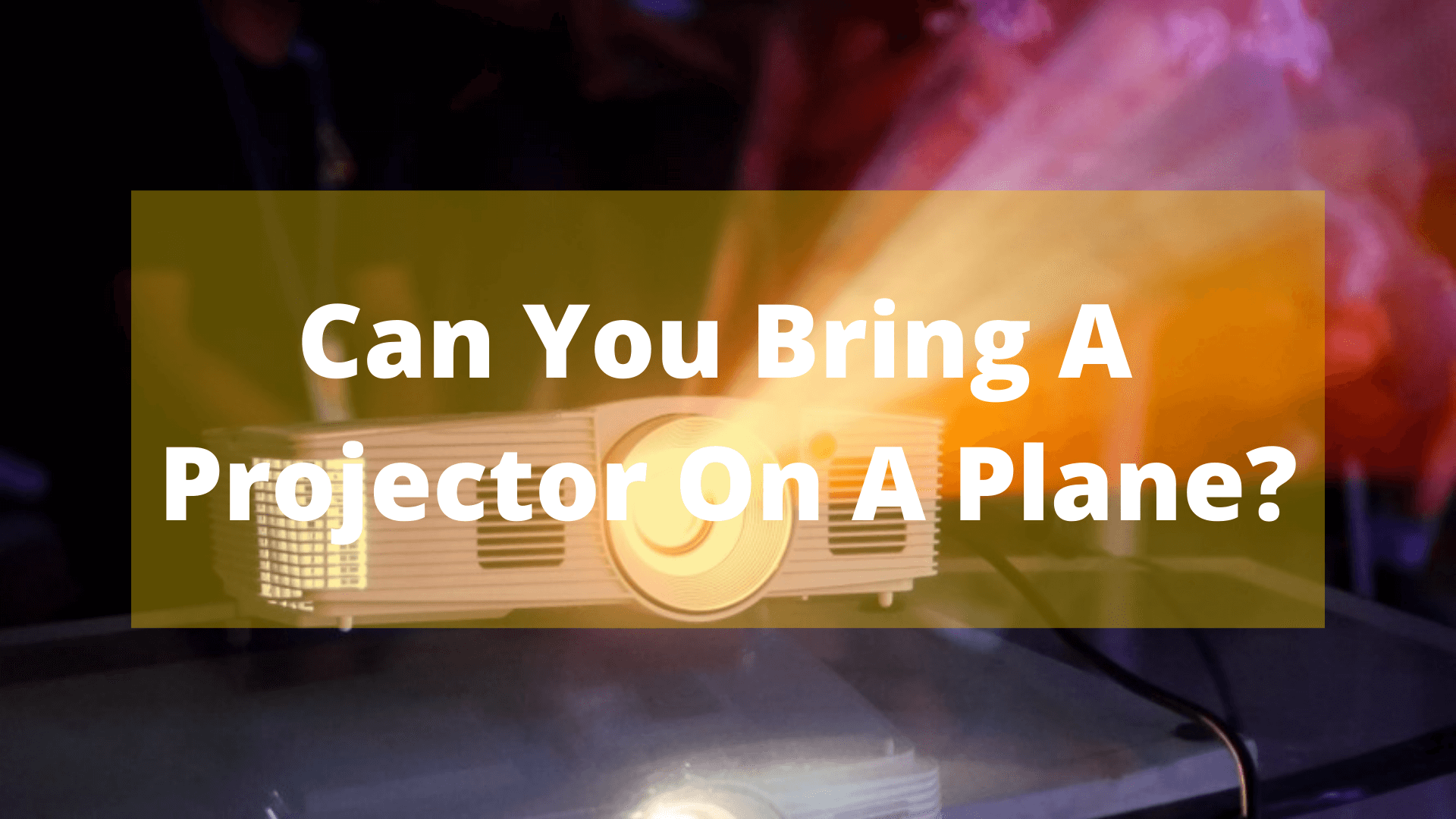Can You Bring A Projector On A Plane? In %currentdate%

Can You Bring A Projector On A Plane?
Projectors have become smaller and more portable in the past few years, so bringing one on your trip is possible. Check the size restrictions beforehand and ensure your unit is approved for travel.
Generally speaking, you can take on projectors less than three inches thick and less than 36 inches wide a plane. Larger units that are over three inches thick or 36 inches wide may not be able to be transported.
You can take projectors on planes without any issues. Airline restrictions only apply to certain types of equipment, such as guns and explosives. It’s always best to check with the airline before your trip if any changes or restrictions.
How To Travel With A Projector?
If you’re traveling with a projector, follow these simple tips to keep it safe and avoid any hassles on your trip:
Be Careful
- Consider packing your projector in checked luggage when traveling.
- Keep it safe by avoiding dropping it or letting it bump into things.
- Don’t leave it in hot or damp places, as this can damage it.
- Store it safely and correctly when you’re not using it to avoid problems.
- Remember to pack the power cord and an extra set of batteries if you plan on using your projector while traveling.
Use A Small, Lightweight Projector
If you’re traveling with a projector, keep a few things in mind.
- Firstly, make sure it’s as lightweight as possible.
- Secondly, try to get one with a small enough bulb that you can easily carry around.
- Thirdly, consider getting a portable projector that you can carry around easily.
- Finally, be sure to check the dimensions of your projector before you buy it to make sure it will fit in your luggage.
Buy A Protective Carrying Case
How to safely transport a projector when traveling? There are various ways to do this, but one of the simplest is to buy a protective carrying case. Your projector will be safe, but you’ll also have everything you need for a smooth trip.
You want to make sure that you have a protective carrying case to ensure that your projector arrives in one piece. There are various options available, so it’s important to find the right one for your needs.
What Objects Are Not Allowed On Planes?
Air travelers are often required to remove certain objects from their carry-on and checked luggage before boarding a plane. These items may not be allowed on an airplane due to their potential to cause harm or disrupt the flight.
These items include:
- Explosives and incendiary materials
- Flammable items,
- Gases and pressure containers,
- Matches, oxidizers, and organic peroxides,
- Poisons, infectious materials, and corrosives.
- Organics.
- Radioactive Materials.
Can A Projector Go In A Checked Bag?

Projectors can be packed in a checked bag but should be placed in a hard-sided case to protect them during transport. Make sure the power cord is fully stretched out and covered so that it cannot be pulled or tangled.
Avoid packing the projector near anything that could be damaged if the projector were to fall. Place the projector on a carpeted surface to protect it from scratches or dirt while in transit.
When packing your projector for a trip, avoid putting it in your checked luggage. Airlines are strict about the size and weight of bags that can be brought on board, and projectors are often one of the heaviest items transported.
If your projector does make it onto your flight, be sure to pack it in your carry-on bag and avoid bringing it to the airport security checkpoint.
Who Will Handle My Luggage At The Airport?
When you arrive at the airport, you’ll need to find someone to handle your luggage. The Transportation Security Administration (TSA) handles the security screening of passengers and their luggage.
If you’re traveling with a carry-on bag and no checked bag, you’ll have to go through the checkpoint alone. If you have a checked bag, a friend or family member can take it with you through the checkpoint.
TSA is responsible for screening all passengers and their luggage at U.S. airports. When you arrive at the airport, ask who will be handling your luggage. Most likely, it will be one of the following:
- The airline.
- The transportation company you are using to get to the airport.
- A private security firm contracted by the TSA.
Transportation Security Administration (TSA) has become a much more prominent presence at airports. With stricter security measures in place, the TSA has become the official agency that handles luggage at airports.
Whether you are flying domestically or internationally, it is important to know who will be handling your luggage.
The TSA can be divided into two main groups: checkpoint and bag check.
How Do You Pack A Projector?

Projector packing is simple but not easy. Make sure you pack it well to avoid any damage. The most important part of packing a projector is cushioning it well, so it doesn’t get damaged in shipping.
If your projector has a lens, be sure to pack that too. Also, make sure you mark the box “Fragile” so the shipping company knows to be careful with it.
When packing your projector for a move, keep a few things in mind. Here are some tips for how to pack a projector:
- Make sure the power cord and other cables are neatly bundled.
- Label and bag the projector’s components – this will make finding them much easier during the move.
- Place the projector on a sturdy surface, so it doesn’t shift during transport.
How Fragile Is A Projector?
Projectors are delicate pieces of sophisticated electronics. Don’t pack your projector with your checked luggage when flying. A mishandled projector can easily be damaged, ruining the device and resulting in a costly repair or even a total loss of the projector. the tip to keep your projector safe while traveling is:
- Pack your projector in a sturdy case or packing carton.
What Is The Average Life Of A Projector Lamp?
The average life of a projector lamp is between 1,500 and 2,000 hours. With proper care and regular maintenance, this number can be extended.
Projector lamps are one of the most common pieces of equipment in a projector setup. They provide the light used to create an image on a screen. Depending on the model, projector lamps can be either incandescent or LED.
Follow these tips to keep your lamp running smoothly:
1. Clean the lamp regularly using a soft cloth and mild soap.
2. Avoid using plastic or metal parts of the lamp. These can cause damage over time.
3. Avoid exposing the lamp to direct sunlight or excessive heat or cold.
Are Projectors Better Than TVs?

Projectors have been around for quite some time now, and they are generally seen as a better choice than TVs when it comes to image quality.
One of the main reasons for this is that projectors have far better contrast ratios than most TVs of the time. This means that they can display images with more detail and clarity, which many people find more satisfying when watching TV.
Projectors are becoming more popular than TVs as they offer a higher-quality image, are less expensive to buy and maintain, and can be placed almost anywhere in the house.
While there are some drawbacks to projectors, such as the need for an external screen or projector, overall, they offer a better experience than TVs.
Do Projectors Burn Out?
Projectors typically last around 3,000 hours before they burn out. This time can vary depending on the specific projector and how it is used, but in general, it’s a safe bet to expect your projector to need replacement within that timeframe.
When a projector burns out, the image quality will degrade significantly. If you notice this happening to your projector, it’s important to replace the lamp as soon as possible to maintain optimal image quality.
What Happens If You Don’t Replace Projector Lamp?

If you don’t replace your projector lamp, there is a risk that your current lamp will explode and damage the projector with broken shards in the blowers, fans, and color. Replacing your lamp every 6 months can help to prevent this from happening.
Your projector lamp soon. If you don’t replace it, it might not work properly anymore. The projector’s internal parts will eventually wear out and won’t create the right image on the screen. This could lead to a lot of frustration and wasted time.
There are a few things you can do to prolong the life of your projector.
- First, make sure that you use high-quality lamps.
- Secondly, make sure that you clean your projector regularly.
Is A Projector Better For Your Eyes?
Projectors are better for your eyes because they emit a much brighter light than television, which means you can see details in images and videos that you would not be able to see on a TV.
They also have a wider viewing angle than TVs, meaning you can sit further away from the screen and still see the image.
Conclusion:
Bringing a projector on a plane is safe if it is not classified as a hazardous material. Remember to check with your airline to ensure that the projector is within their size and weight restrictions.
If it is not, many companies offer shipping services for projectors. Planning and taking the necessary precautions will ensure that your projector arrives safely and in one piece at your destination.
Projectors are allowed on airplanes as long as they meet the size and weight restrictions. Check with your airline to see if any other specific restrictions may apply.
While bringing a projector on a plane is generally permissible, checking with the airline first is always best. If you plan to bring a projector on a plane, pack it in your carry-on bag and be prepared for extra security screening.







